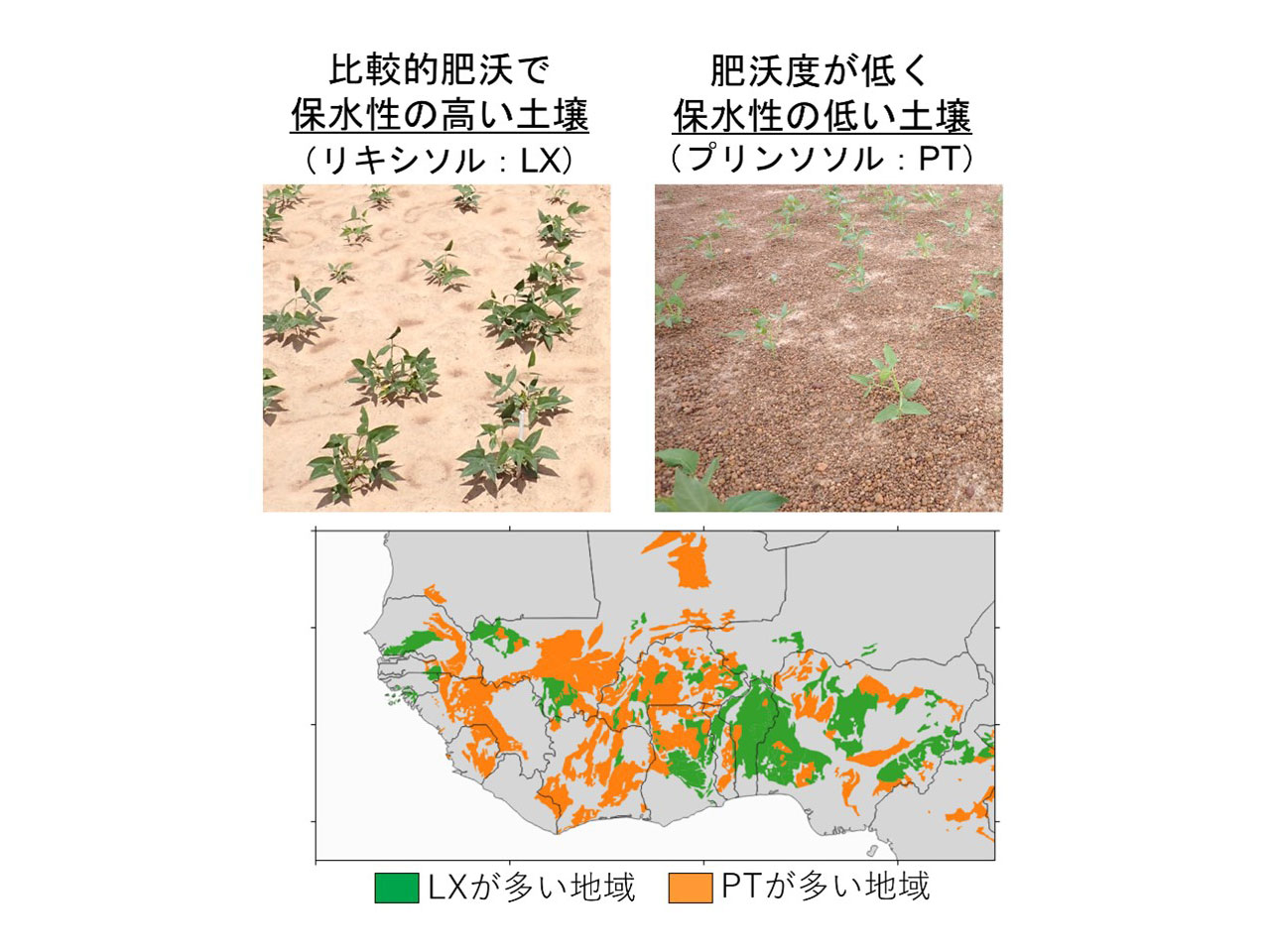2023-11-22 デンマーク工科大学(DTU)
◆気候変動はCO2排出で特徴づけられますが、生物多様性の喪失の評価は難しく、デンマーク工科大学のPeter Fantke教授は、これを生命サイクル評価(LCA)に組み込むための量的手法を開発しています。
◆生物多様性の損失は複雑で、種の数だけでなく、遺伝的変異や種の相互作用、生態系内でのそれらの機能も考慮する必要があります。
◆Fantke教授の研究グループは、異なるストレス要因の寄与、化学物質やプラスチックの排出の経路と影響メカニズム、さらには個々の生態系の感受性などを理解することを目指し、化学物質の排出が生物多様性に与える影響を評価し最終的にはLCAに導入することを目指しています。
<関連情報>
- https://www.dtu.dk/english/news/all-news/understanding-the-link-between-biodiversity-loss-and-technology-life-cycles
- https://www.sciencedirect.com/science/article/pii/S004896972305550X
- https://pubs.acs.org/doi/10.1021/acs.est.3c04968
- https://www.sciencedirect.com/science/article/pii/S0160412022006328
- https://pubs.acs.org/doi/10.1021/acs.est.1c06098
- https://pubs.acs.org/doi/10.1021/acs.est.1c04158
土壌中のマイクロプラスチックとナノプラスチック: ライフサイクルアセスメントにおける発生源と土壌生態系サービスへの影響の関連付け Micro- and nanoplastics in soil: Linking sources to damage on soil ecosystem services in life cycle assessment
Tong Li, Lizhen Cui, Zhihong Xu, Hongdou Liu, Xiaoyong Cui, Peter Fantke
Science of The Total Environment Available online: 9 September 2023
DOI:https://doi.org/10.1016/j.scitotenv.2023.166925
Highlights
•Micro- and nanoplastics (MNPs) pose risks to soil ecosystems and vital ecosystem services (ES).
•Sources, fate and effects of MNPs on soil ecosystems were demonstrated systematically.
•Life Cycle Assessment (LCA) needs to address MNPs-related damage to soil ES.
•Proposed conceptual framework links MNPs effects to species loss, functional diversity loss, and soil ES damage.
Abstract
Soil ecosystems are crucial for providing vital ecosystem services (ES), and are increasingly pressured by the intensification and expansion of human activities, leading to potentially harmful consequences for their related ES provision. Micro- and nanoplastics (MNPs), associated with releases from various human activities, have become prevalent in various soil ecosystems and pose a global threat. Life Cycle Assessment (LCA), a tool for evaluating environmental performance of product and technology life cycles, has yet to adequately include MNPs-related damage to soil ES, owing to factors like uncertainties in MNPs environmental fate and ecotoxicological effects, and characterizing related damage on soil species loss, functional diversity, and ES. This study aims to address this gap by providing as a first step an overview of the current understanding of MNPs in soil ecosystems and proposing a conceptual approach to link MNPs impacts to soil ES damage. We find that MNPs pervade soil ecosystems worldwide, introduced through various pathways, including wastewater discharge, urban runoff, atmospheric deposition, and degradation of larger plastic debris. MNPs can inflict a range of ecotoxicity effects on soil species, including physical harm, chemical toxicity, and pollutants bioaccumulation. Methods to translate these impacts into damage on ES are under development and typically focus on discrete, yet not fully integrated aspects along the impact-to-damage pathway. We propose a conceptual framework for linking different MNPs effects on soil organisms to damage on soil species loss, functional diversity loss and loss of ES, and elaborate on each link. Proposed underlying approaches include the Threshold Indicator Taxa Analysis (TITAN) for translating ecotoxicological effects associated with MNPs into quantitative measures of soil species diversity damage; trait-based approaches for linking soil species loss to functional diversity loss; and ecological networks and Bayesian Belief Networks for linking functional diversity loss to soil ES damage. With the proposed conceptual framework, our study constitutes a starting point for including the characterization of MNPs-related damage on soil ES in LCA.
Graphical abstract

分割するかしないか: 特定の分類群に対する種の感受性分布を用いた水生生態系における化学物質汚染の影響の特徴づけ To Split or Not to Split: Characterizing Chemical Pollution Impacts in Aquatic Ecosystems with Species Sensitivity Distributions for Specific Taxonomic Groups
Susan Anyango Oginah, Leo Posthuma, Michael Hauschild, Jaap Slootweg, Marissa Kosnik, and Peter Fantke
Environmental Science and Technology Published:September 21, 2023
DOI:https://doi.org/10.1021/acs.est.3c04968
Abstract

Bridging applied ecology and ecotoxicology is key to protect ecosystems. These disciplines show a mismatch, especially when evaluating pressures. Contrasting to applied ecology, ecotoxicological impacts are often characterized for whole species assemblages based on Species Sensitivity Distributions (SSDs). SSDs are statistical models describing per chemical across-species sensitivity variation based on laboratory toxicity tests. To assist in the aligning of the disciplines and improve decision-support uses of SSDs, we investigate taxonomic-group-specific SSDs for algae/cyanobacteria/aquatic plants, invertebrates, and vertebrates for 180 chemicals with sufficient test data. We show that splitting improves pollution impact assessments for chemicals with a specific mode of action and, surprisingly, for narcotic chemicals. We provide a framework for splitting SSDs that can be applied to serve in environmental protection, life cycle assessment, and management of freshwater ecosystems. We illustrate that using split SSDs has potentially large implications for the decision-support of SSD-based outputs around the globe.
ライフサイクルアセスメントにおける淡水の生態毒性と生態系サービスへの影響の関連付け Linking freshwater ecotoxicity to damage on ecosystem services in life cycle assessment
Susan A. Oginah, Leo Posthuma, Lorraine Maltby, Michael Hauschild, Peter Fantke
Environment International Available online: 19 December 2022
DOI:https://doi.org/10.1016/j.envint.2022.107705
Abstract
Freshwater ecosystems provide major benefits to human wellbeing—so-called ecosystem services (ES)—but are currently threatened among others by ecotoxicological pressure from chemicals reaching the environment. There is an increased motivation to incorporate ES in quantification tools that support decision-making, such as life cycle assessment (LCA). However, mechanistic models and frameworks that can systematically translate ecotoxicity effect data from chemical tests into eventual damage on species diversity, functional diversity, and ES in the field are still missing. While current approaches focus on translating predicted ecotoxicity impacts to damage in terms of species loss, no approaches are available in LCA and other comparative assessment frameworks for linking ecotoxicity to damage on ecosystem functioning or ES.
To overcome this challenge, we propose a way forward based on evaluating available approaches to characterize damage of chemical pollution on freshwater ES. We first outline an overall framework for linking freshwater ecotoxicity effects to damage on related ES in compliance with the boundary conditions of quantitative, comparative assessments. Second, within the proposed framework, we present possible approaches for stepwise linking ecotoxicity effects to species loss, functional diversity loss, and damage on ES. Finally, we discuss strengths, limitations, and data availability of possible approaches for each step.
Although most approaches for directly deriving damage on ES from either species loss or damage to functional diversity have not been operationalized, there are some promising ways forward. The Threshold Indicator Taxa ANalysis (TITAN) seems suitable to translate predicted ecotoxicity effects to a metric of quantitative damage on species diversity. A Trait Probability Density Framework (TPD) approach that incorporates various functional diversity components and functional groups could be adapted to link species loss to functional diversity loss. An Ecological Production Function (EPF) approach seems most promising for further linking functional diversity loss to damage on ES flows for human wellbeing. However, in order to integrate the entire pathway from predicted freshwater ecotoxicity to damage on ES into LCA and other comparative frameworks, the approaches adopted for each step need to be harmonized in terms of assumptions, boundary conditions and consistent interfaces with each other.
Graphical abstract

化学汚染の絶対的環境持続可能性の評価に向けて Toward Assessing Absolute Environmental Sustainability of Chemical Pollution
Marissa B. Kosnik, Michael Zwicky Hauschild, and Peter Fantke
Environmental Science and Technology Published:March 29, 2022
DOI:https://doi.org/10.1021/acs.est.1c06098
Abstract

Chemicals are widely used in modern society, which can lead to negative impacts on ecosystems. Despite the urgent relevance for global policy setting, there are no established methods to assess the absolute sustainability of chemical pressure at relevant spatiotemporal scales. We propose an absolute environmental sustainability framework (AESA) for chemical pollution where (1) the chemical pressure on ecosystems is quantified, (2) the ability for ecosystems to withstand chemical pressure (i.e., their carrying capacity) is determined, and (3) the “safe space” is derived, wherein chemical pressure is within the carrying capacity and hence does not lead to irreversible adverse ecological effects. This space is then allocated to entities contributing to the chemical pressure. We discuss examples involving pesticide use in Europe to explore the associated challenges in implementing this framework (e.g., identifying relevant chemicals, conducting analyses at appropriate spatiotemporal scales) and ways forward (e.g., chemical prioritization approaches, data integration). The proposed framework is the first step toward understanding where and how much chemical pressure exceeds related ecological limits and which sources and actors are contributing to the chemical pressure. This can inform sustainable levels of chemical use and help policy makers establish relevant and science-based protection goals from regional to global scale.
新規事業体の惑星境界の安全な活動空間の外側で Outside the Safe Operating Space of the Planetary Boundary for Novel Entities
Linn Persson, Bethanie M. Carney Almroth, Christopher D. Collins, Sarah Cornell, Cynthia A. de Wit*, Miriam L. Diamond, Peter Fantke, Martin Hassellöv, Matthew MacLeod, Morten W. Ryberg, Peter Søgaard Jørgensen, Patricia Villarrubia-Gómez, Zhanyun Wang, and Michael Zwicky Hauschild
Environmental Science and Technology Published:January 18, 2022
DOI:https://doi.org/10.1021/acs.est.1c04158
Abstract

We submit that the safe operating space of the planetary boundary of novel entities is exceeded since annual production and releases are increasing at a pace that outstrips the global capacity for assessment and monitoring. The novel entities boundary in the planetary boundaries framework refers to entities that are novel in a geological sense and that could have large-scale impacts that threaten the integrity of Earth system processes. We review the scientific literature relevant to quantifying the boundary for novel entities and highlight plastic pollution as a particular aspect of high concern. An impact pathway from production of novel entities to impacts on Earth system processes is presented. We define and apply three criteria for assessment of the suitability of control variables for the boundary: feasibility, relevance, and comprehensiveness. We propose several complementary control variables to capture the complexity of this boundary, while acknowledging major data limitations. We conclude that humanity is currently operating outside the planetary boundary based on the weight-of-evidence for several of these control variables. The increasing rate of production and releases of larger volumes and higher numbers of novel entities with diverse risk potentials exceed societies’ ability to conduct safety related assessments and monitoring. We recommend taking urgent action to reduce the harm associated with exceeding the boundary by reducing the production and releases of novel entities, noting that even so, the persistence of many novel entities and/or their associated effects will continue to pose a threat.



